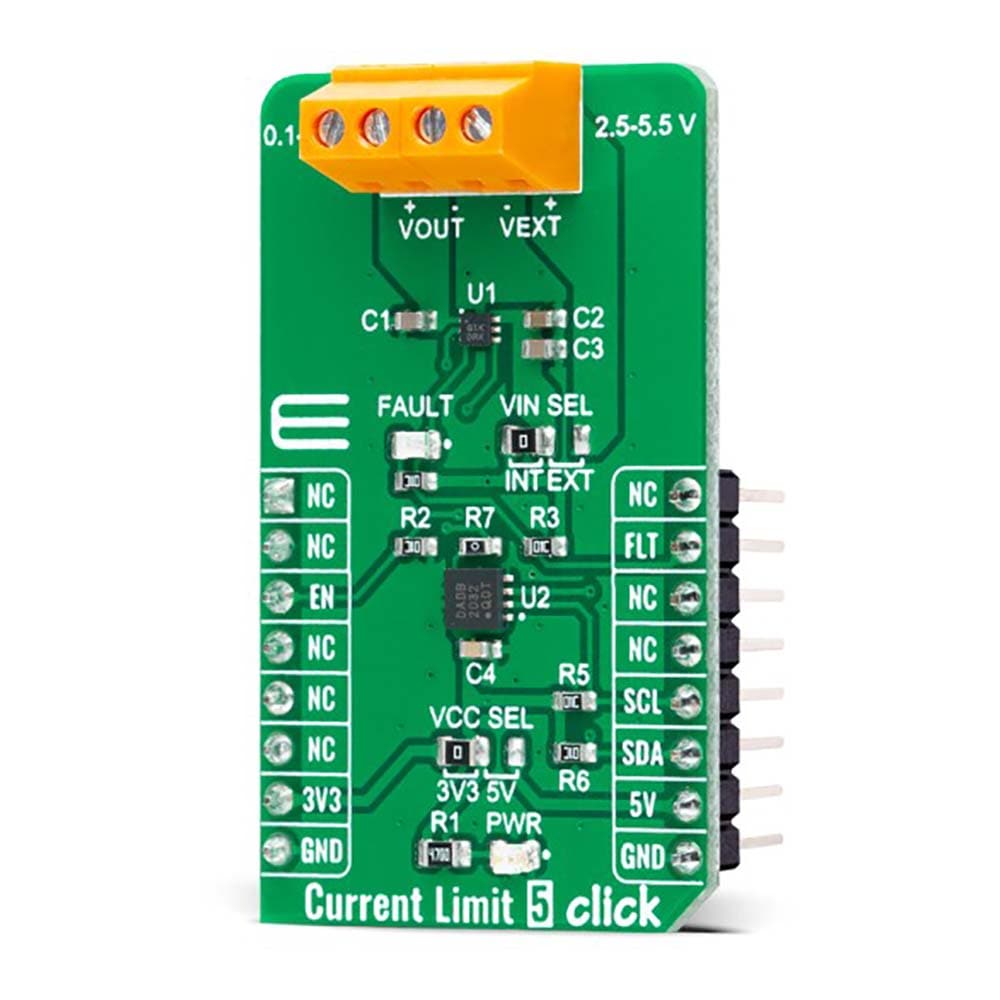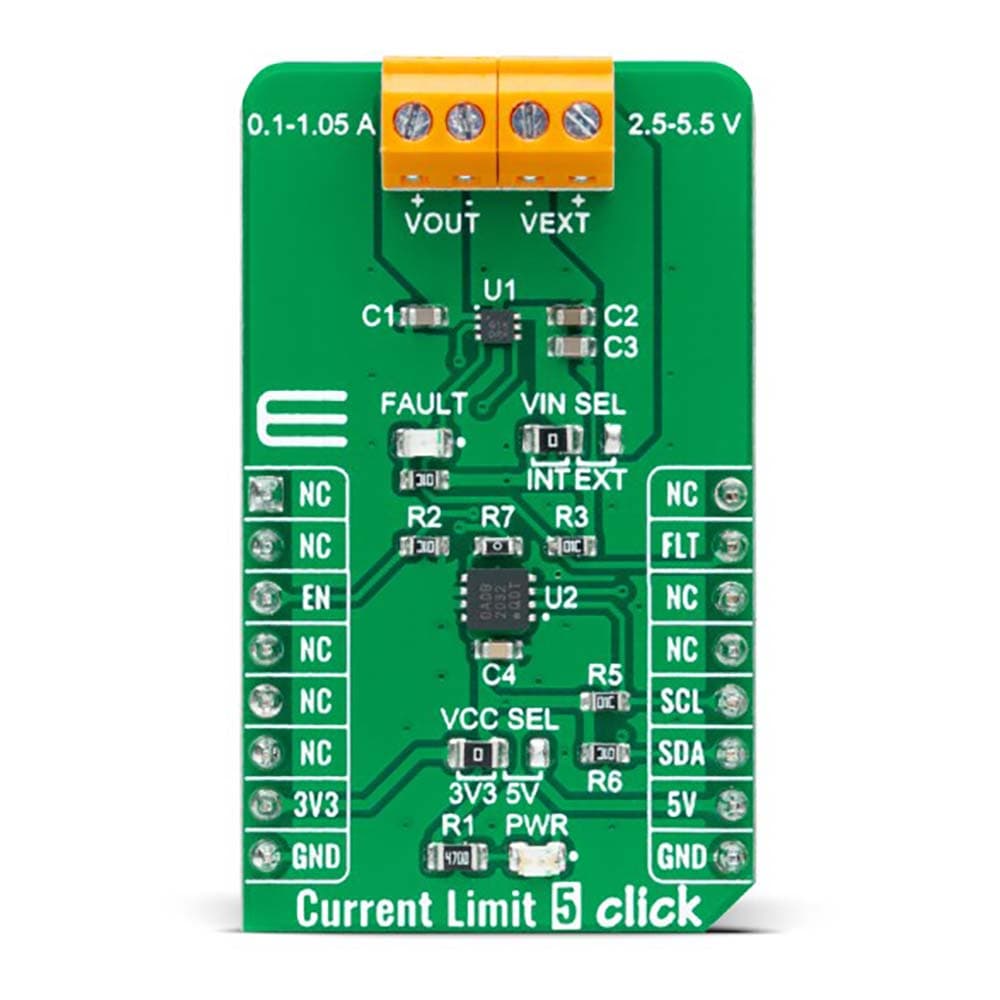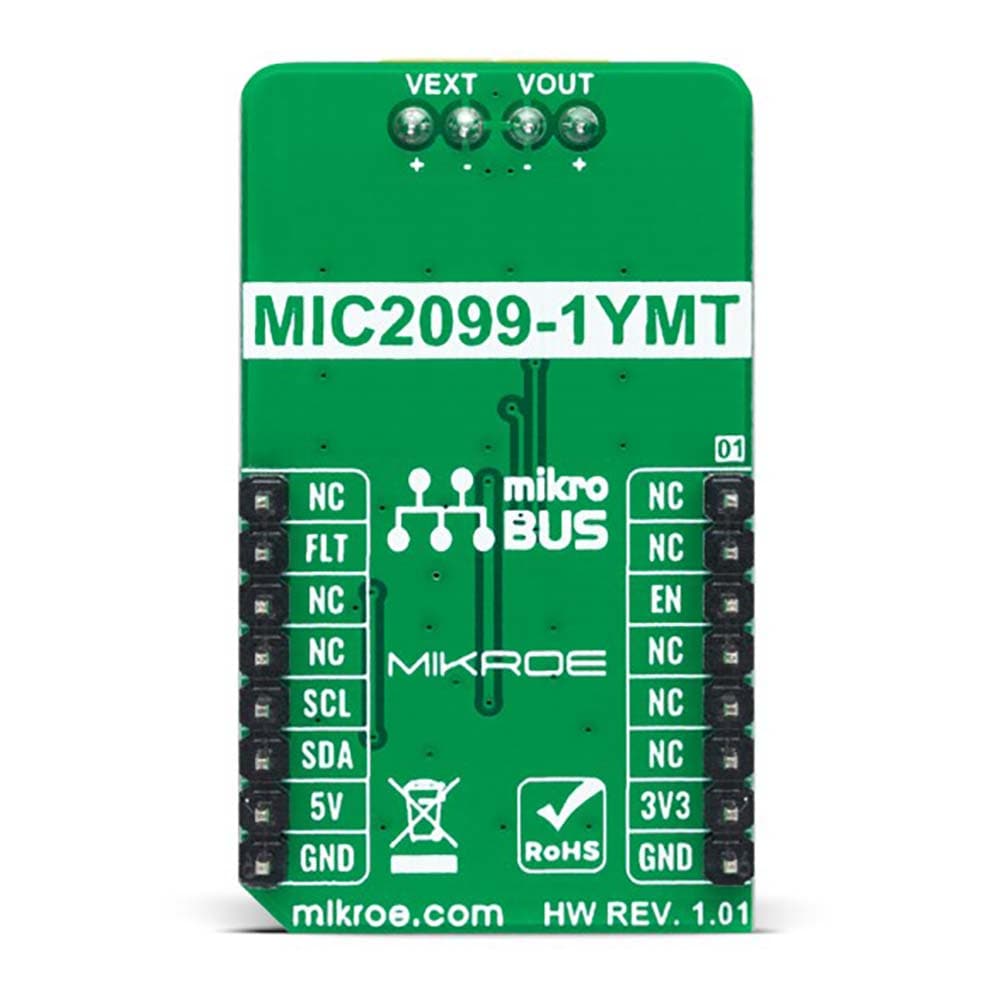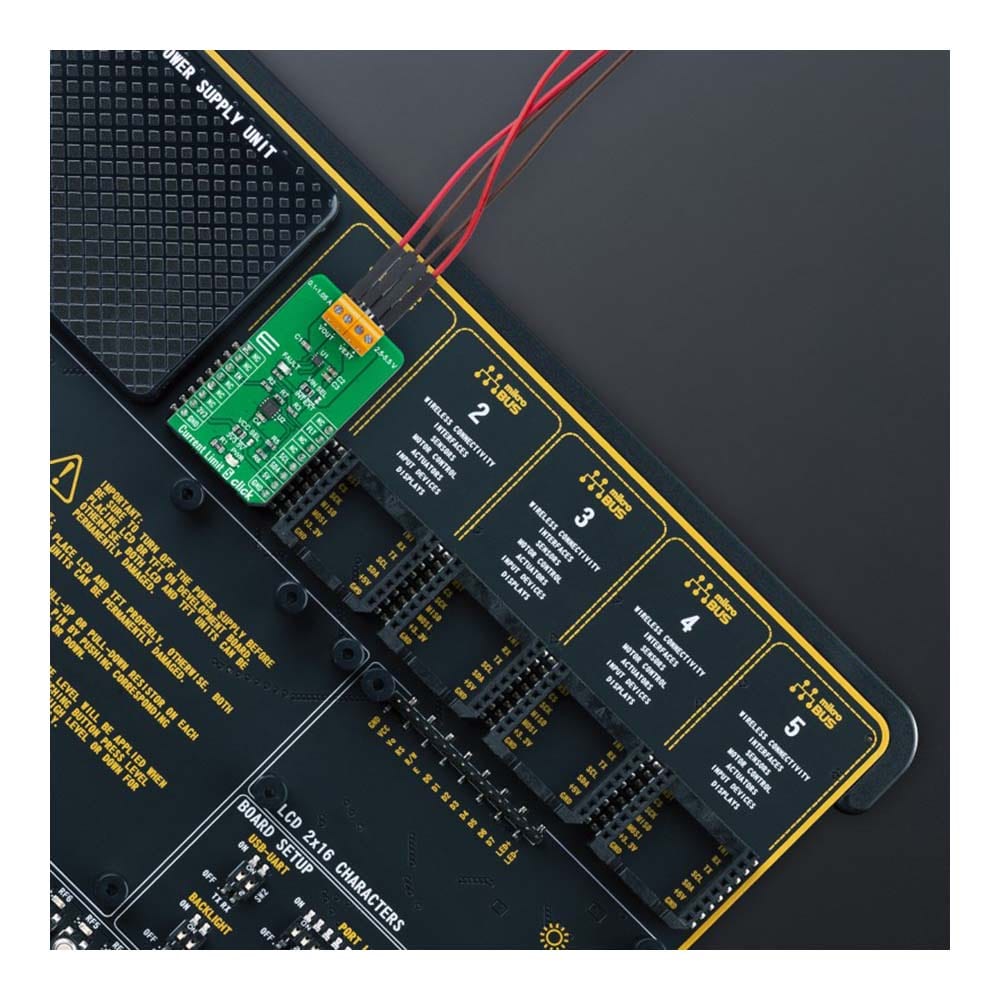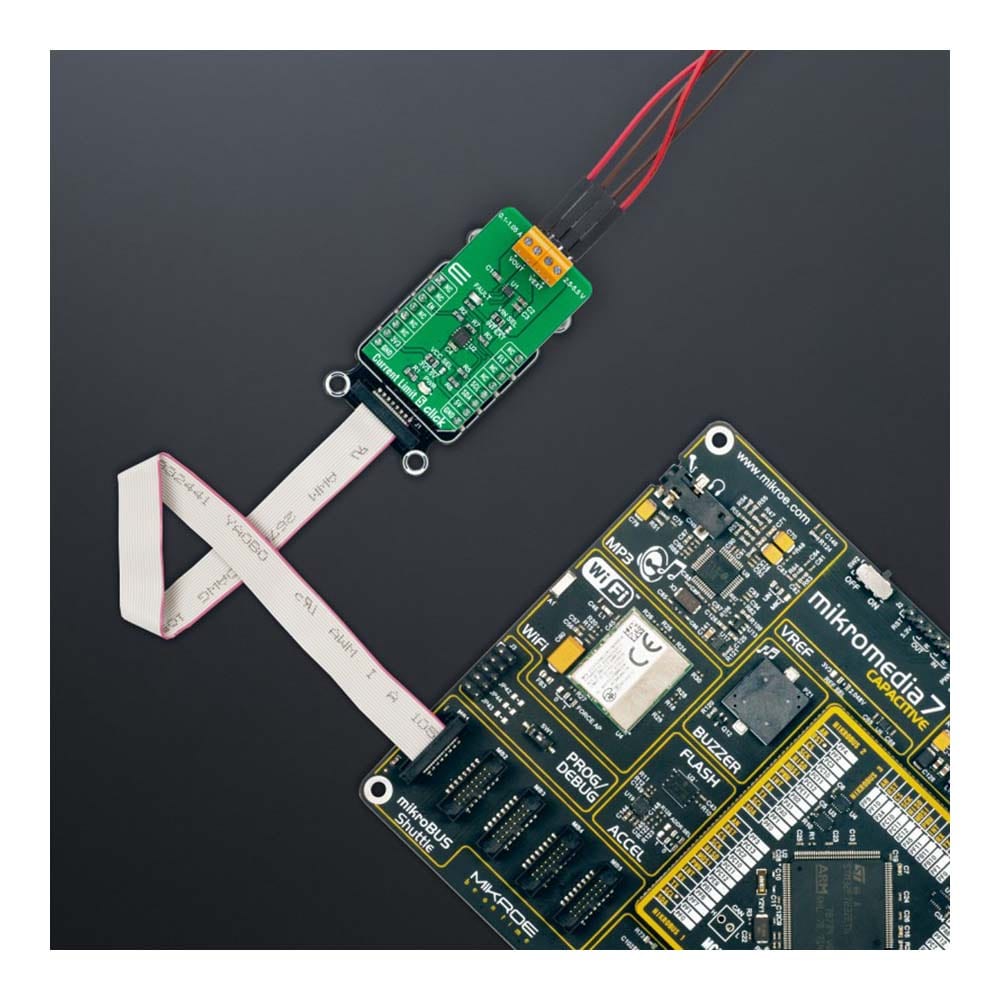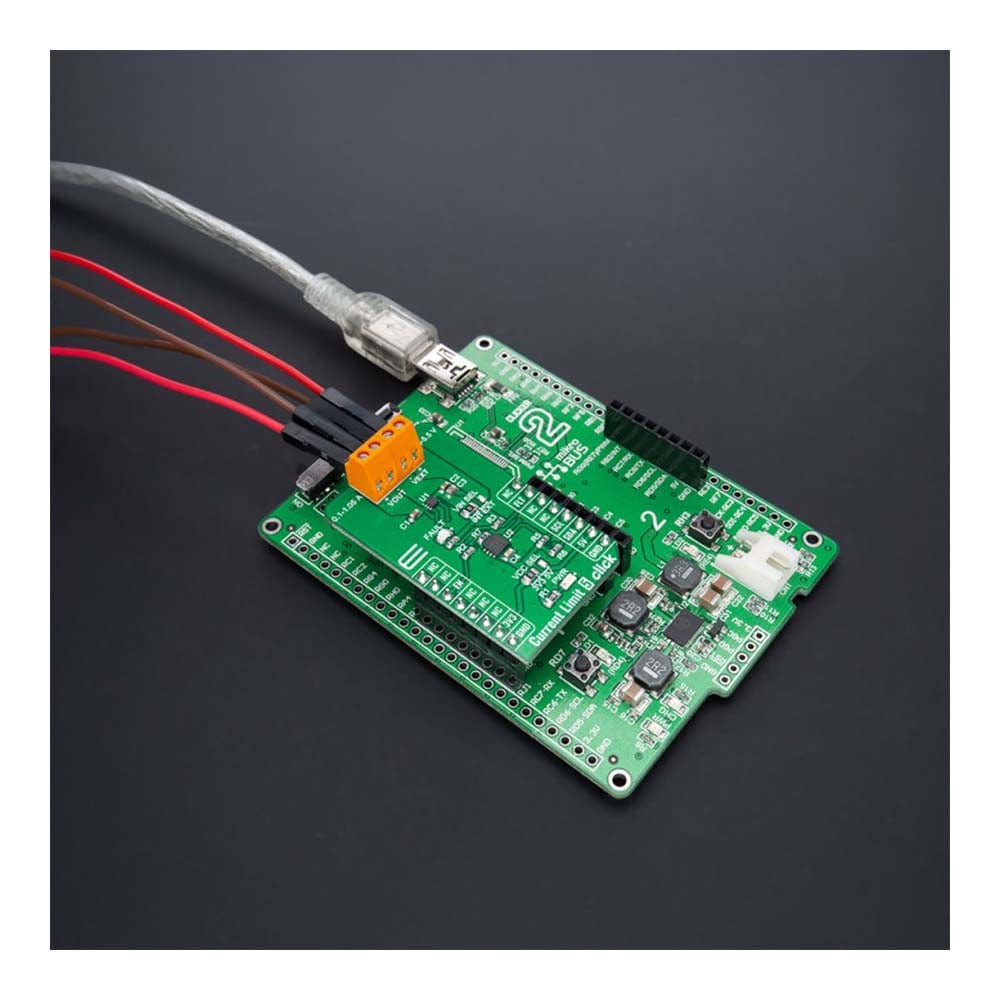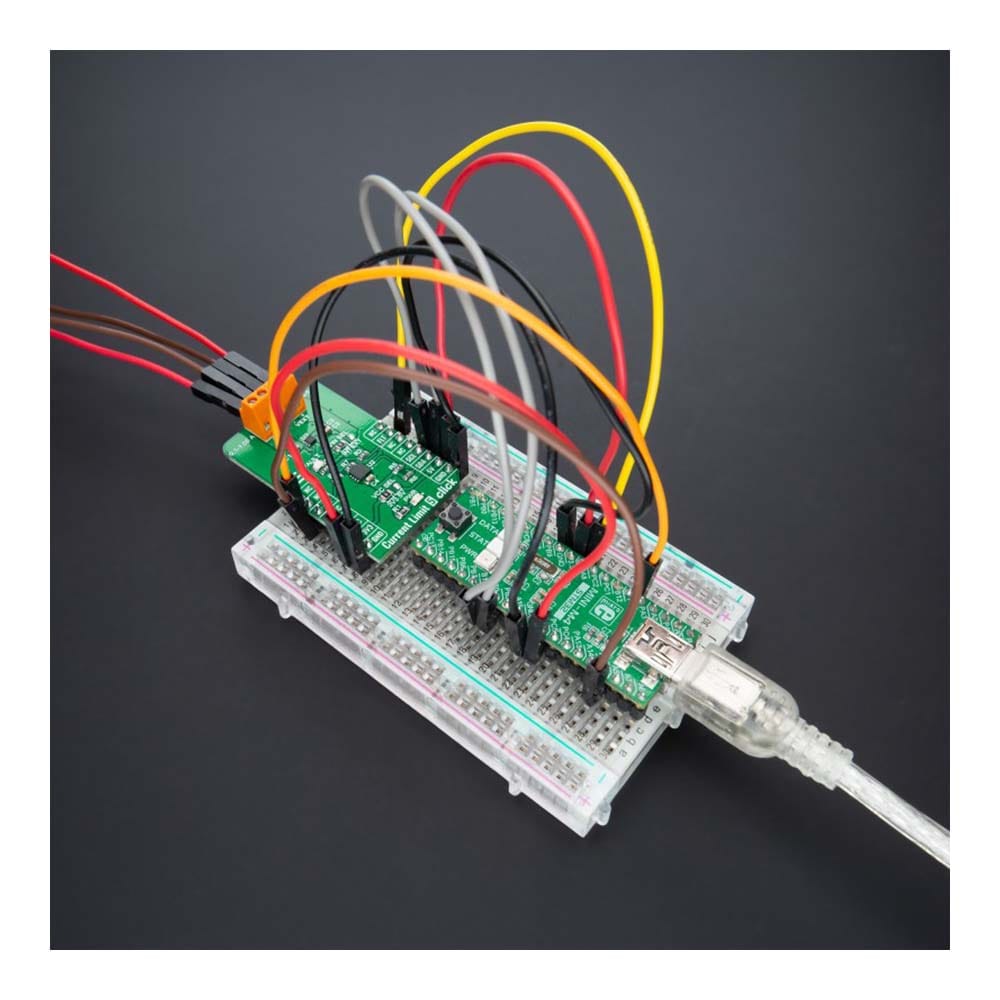
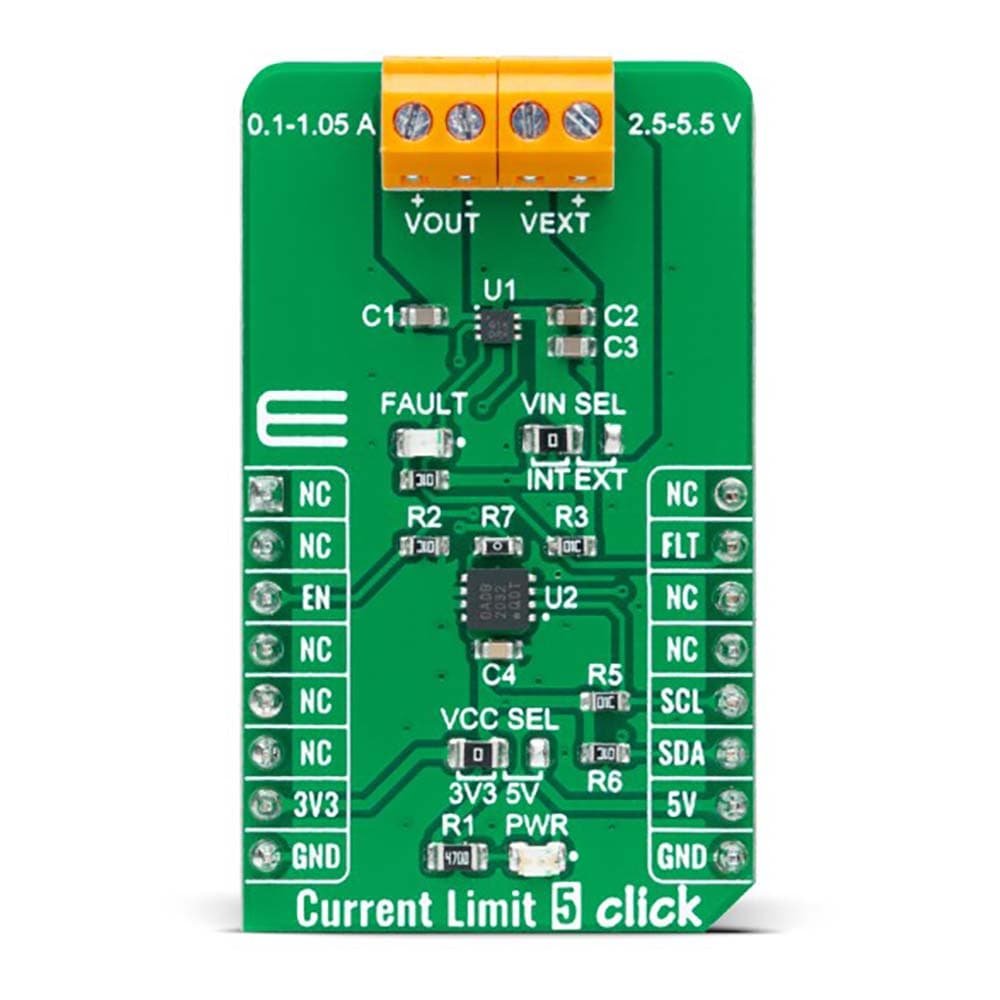
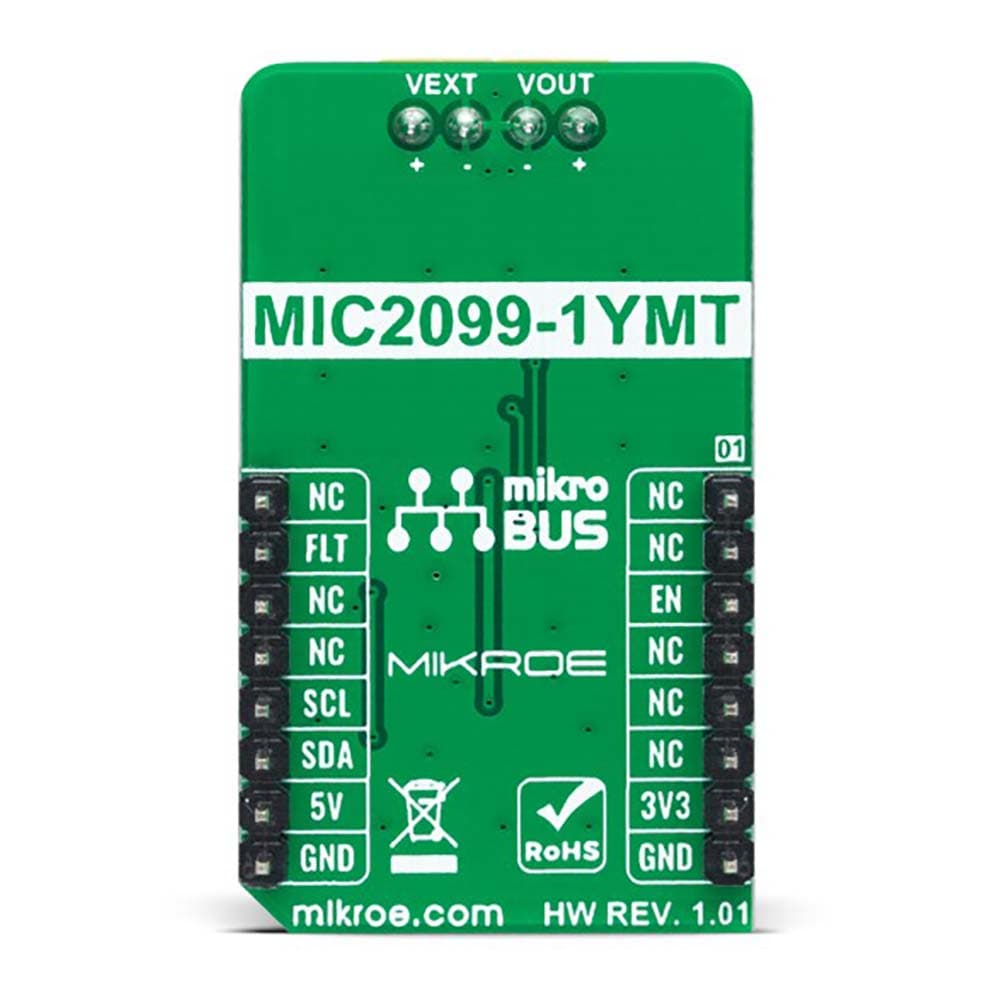
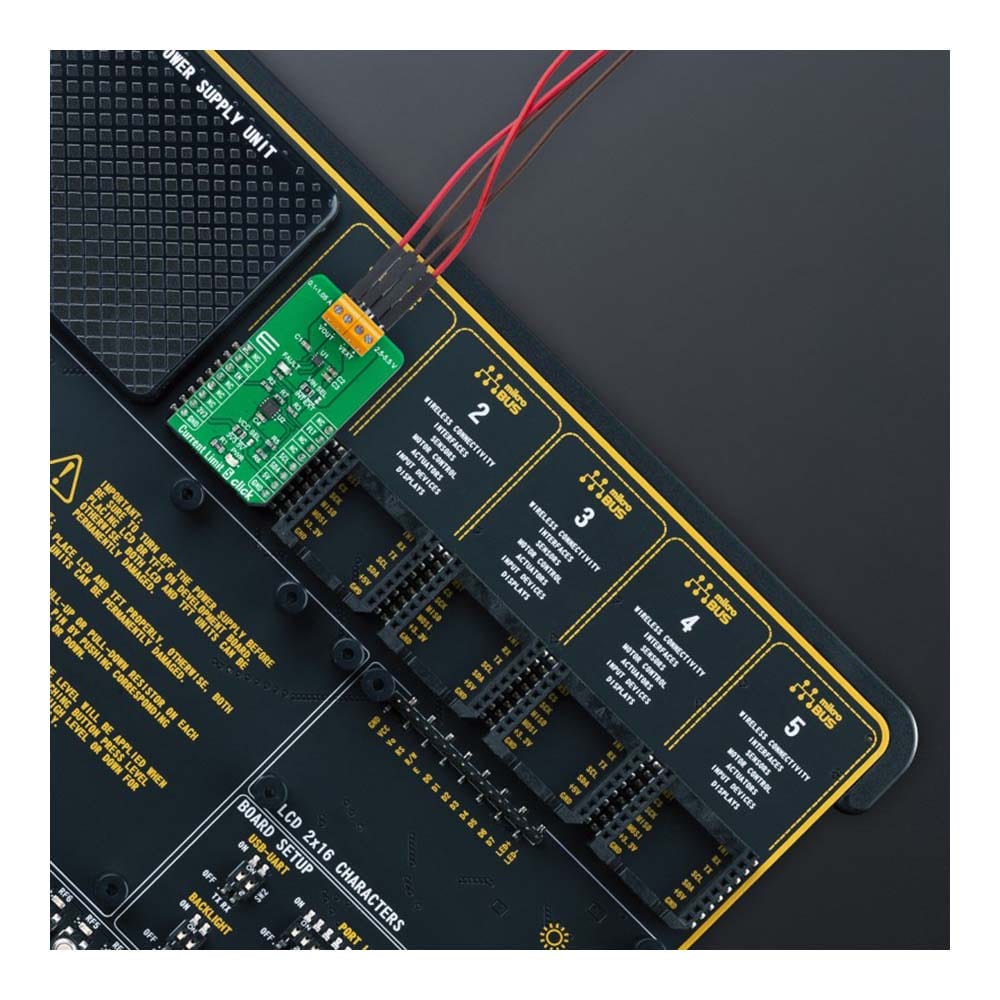
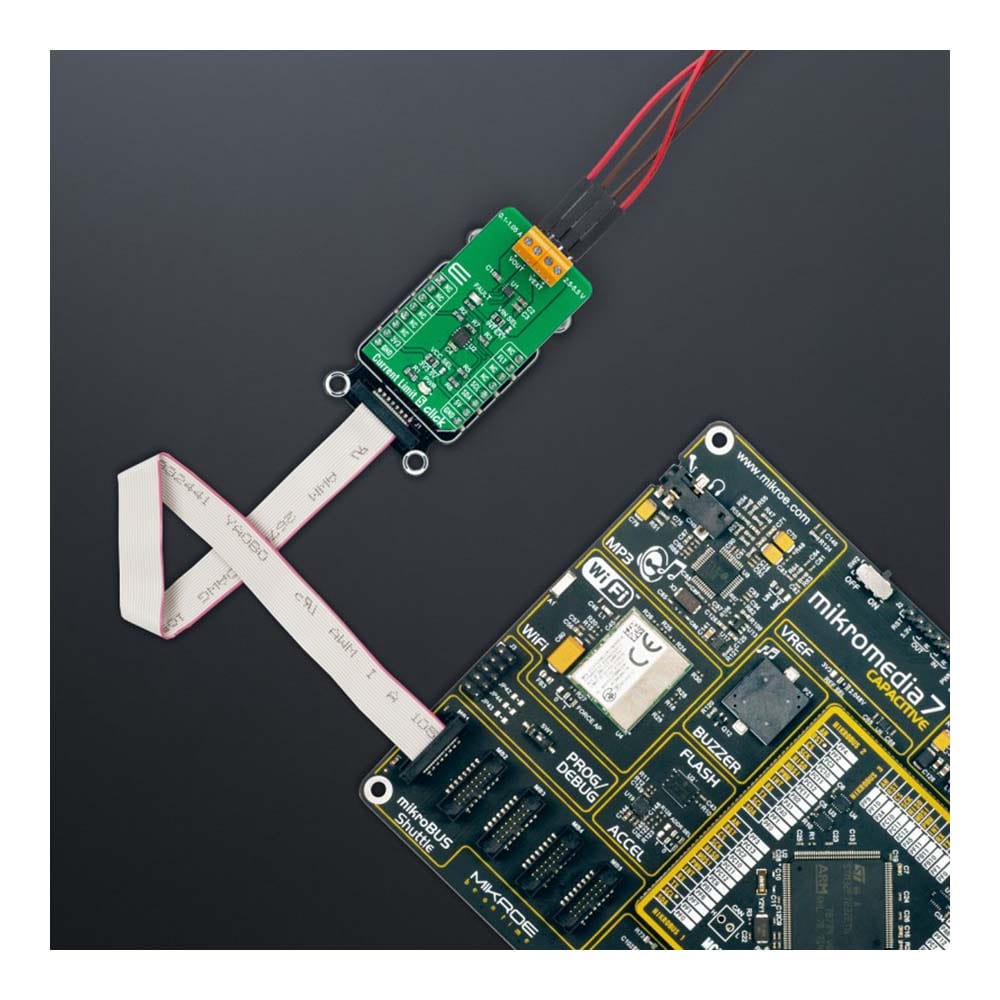
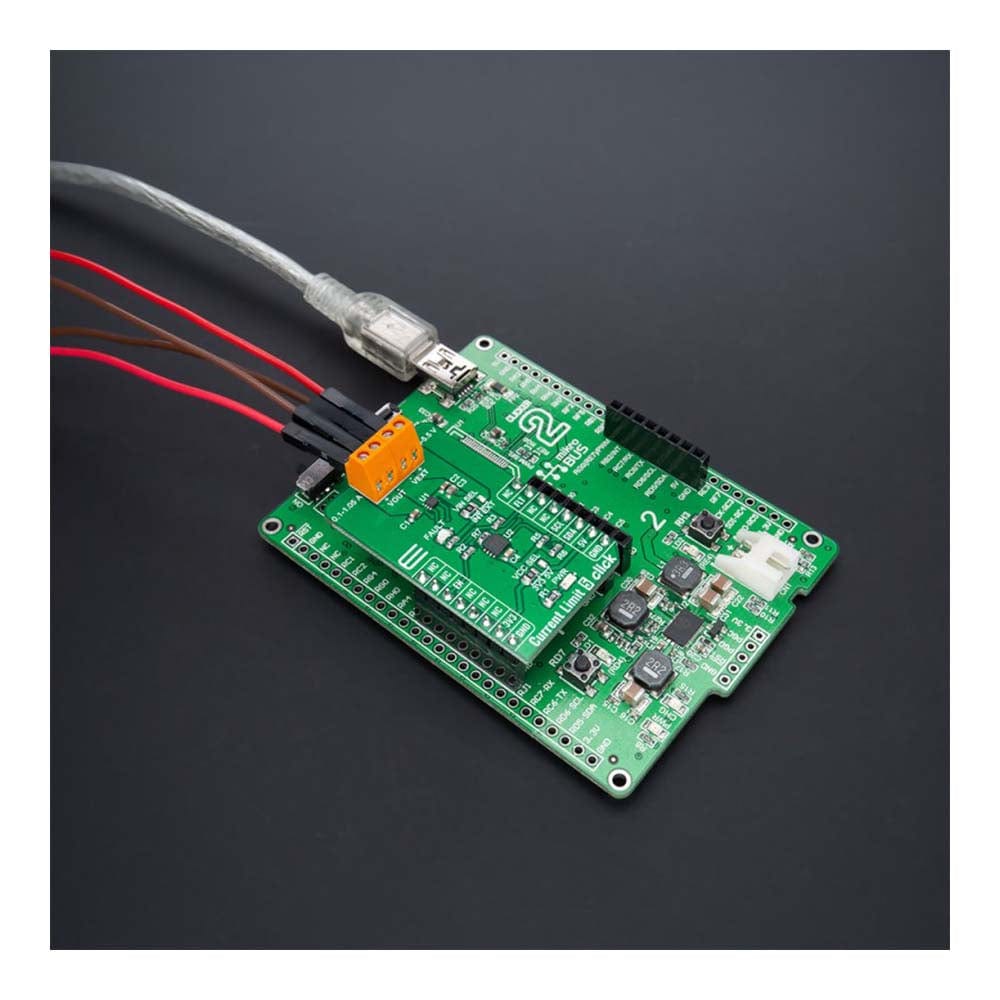

Key Features
Overview
The Current Limit 5 Click Board™ is a compact add-on board representing a current-limiting solution. This board features the MIC2099, a current-limit power distribution switch from Microchip Technology. This Click board™ represents a programmable current limit solution with various protection features and fault indication, which operates from a 2.5V to 5.5V input voltage range. Also, the current limit is adjustable from 100mA up to 1.05A programmed through the MCP4561 digital potentiometer. This Click board™ is suitable for applications in portable equipment and condition monitoring or power supplies, protecting them in short circuits or other overload conditions.
The Current Limit 5 Click Board™ is supported by a mikroSDK compliant library, which includes functions that simplify software development. This Click board™ comes as a fully tested product, ready to be used on a system equipped with the mikroBUS™ socket.
Downloads
La carte Click Board™ Current Limit 5 est une carte complémentaire compacte représentant une solution de limitation de courant. Cette carte est équipée du MIC2099, un commutateur de distribution d'alimentation à limitation de courant de Microchip Technology. Cette carte Click Board™ représente une solution de limitation de courant programmable avec diverses fonctions de protection et d'indication de défaut, qui fonctionne sur une plage de tension d'entrée de 2,5 V à 5,5 V. De plus, la limite de courant est réglable de 100 mA à 1,05 A programmée via le potentiomètre numérique MCP4561. Cette carte Click Board™ convient aux applications dans les équipements portables et la surveillance de l'état ou des alimentations électriques, les protégeant en cas de courts-circuits ou d'autres conditions de surcharge.
La carte Click Board™ Current Limit 5 est prise en charge par une bibliothèque compatible mikroSDK, qui comprend des fonctions qui simplifient le développement logiciel. Cette carte Click Board™ est un produit entièrement testé, prêt à être utilisé sur un système équipé du socket mikroBUS™.
| General Information | |
|---|---|
Part Number (SKU) |
MIKROE-4999
|
Manufacturer |
|
| Physical and Mechanical | |
Weight |
0.02 kg
|
| Other | |
Country of Origin |
|
HS Code Customs Tariff code
|
|
EAN |
8606027389115
|
Warranty |
|
Frequently Asked Questions
Have a Question?
Be the first to ask a question about this.

